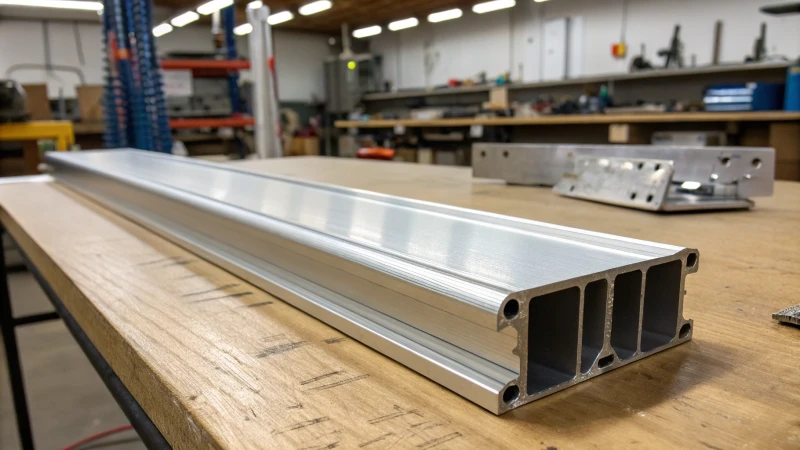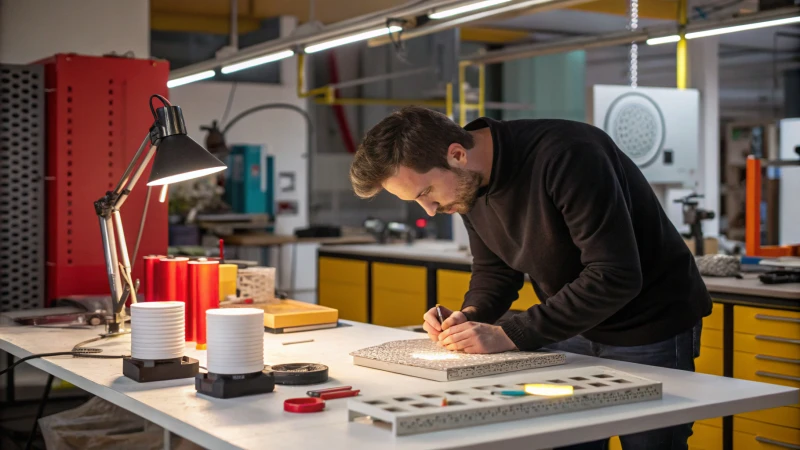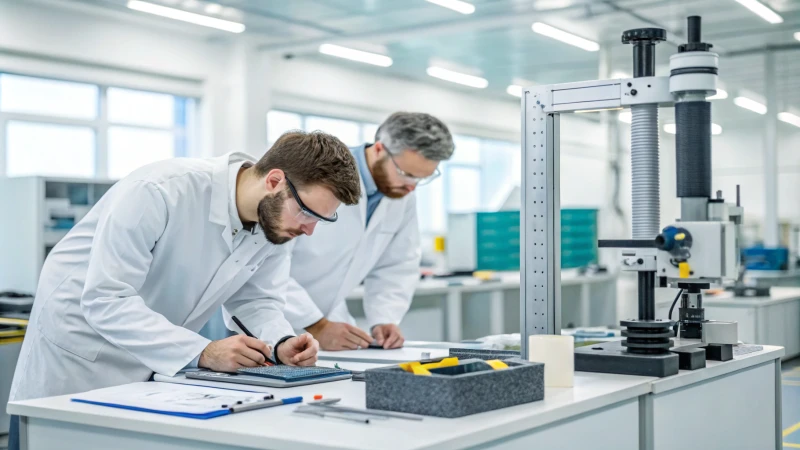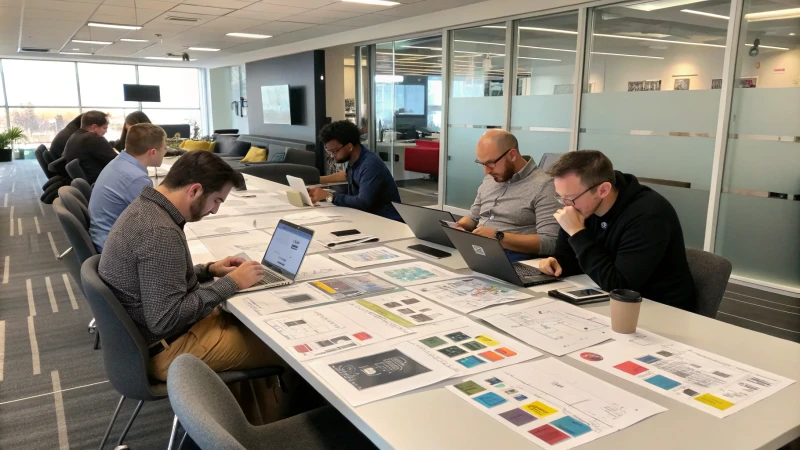How to Improve Aluminum Profile Quality Control through Prototype Samples?

In the world of aluminum profile manufacturing, achieving impeccable quality is paramount for success. But how can manufacturers guarantee that every profile meets the highest standards?
Prototype samples are crucial for improving aluminum profile quality control by allowing manufacturers to verify design consistency, identify potential issues, and optimize production processes before mass production.
While the benefits of using prototype samples are clear, understanding how to implement them effectively can transform your manufacturing operations. Dive deeper into this guide to discover the key quality control points and best practices that can elevate your production quality.
Prototype samples ensure design consistency in aluminum profiles.True
Prototype samples allow verification of design consistency before mass production.
Mass production starts before prototype sample testing in quality control.False
Prototype testing occurs prior to mass production to identify issues.
What Are the Key Benefits of Using Prototype Samples?
Prototype samples are essential in product development, offering invaluable insights into design feasibility, functionality, and manufacturability. They allow companies to refine their products before mass production, reducing costs and enhancing quality.
Prototype samples help identify design flaws early, improve product quality, and reduce costs by minimizing rework. They also facilitate better stakeholder communication and validation of design concepts.

Early Identification of Design Flaws
Prototype samples provide a tangible representation of the final product, allowing designers and engineers to detect any design flaws or inconsistencies early in the development process. By examining the prototype closely, teams can make necessary adjustments, avoiding costly mistakes later on.
Enhancing Product Quality
By using prototype samples, manufacturers can perform extensive quality checks on the product’s dimensions, materials, and functionality. This step ensures that the final product meets the desired quality standards, ultimately leading to higher customer satisfaction.
Cost Reduction and Efficiency
Prototyping can significantly reduce production costs by identifying issues before full-scale manufacturing begins. By addressing potential problems early, companies save on rework and waste. The initial investment in prototyping often results in long-term savings.
| Benefit | Description |
|---|---|
| Early Detection | Identifies issues in the design phase, preventing costly revisions. |
| Quality Assurance | Ensures product meets standards through rigorous testing. |
| Cost Efficiency | Minimizes waste and rework by addressing problems early on. |
Facilitating Stakeholder Communication
Prototypes serve as an excellent tool for communicating design concepts to stakeholders such as investors, partners, or customers. They offer a physical model to demonstrate the product’s functionality and aesthetics, making it easier to gain feedback and approval.
Validating Design Concepts
Using prototypes allows companies to test the viability of their design concepts in real-world scenarios. This validation step is crucial for ensuring that the product not only looks good but also functions as intended in its intended environment.
Supporting Innovation and Iteration
Prototyping supports an iterative design process, enabling continuous improvement. Teams can experiment with different materials or features, fostering innovation and leading to a more refined final product. By iterating on prototypes, companies can enhance their product’s competitive edge in the market.
Prototypes help detect design flaws early in development.True
Prototypes allow for early identification of design flaws, preventing costly mistakes.
Prototype samples increase production costs significantly.False
Prototyping reduces costs by identifying issues before full-scale manufacturing.
How Do Prototype Samples Identify Potential Quality Issues?
Prototype samples are critical in spotting quality issues early, preventing costly errors in production. By testing these samples, manufacturers can ensure design accuracy, material quality, and production consistency.
Prototype samples help identify potential quality issues by allowing for early detection of design flaws, material inconsistencies, and manufacturing defects. This proactive approach ensures quality control before full-scale production begins.

Understanding Prototype Samples’ Role in Quality Assurance
Prototype samples serve as a preliminary test to confirm that the product design and manufacturing processes are aligned with desired outcomes. They play a key role in evaluating whether the final product will meet expected standards.
Spotting Design and Manufacturing Flaws
During the prototype phase, samples undergo rigorous testing for dimension accuracy, surface quality, and structural integrity. Issues such as mold defects or material inconsistencies are identified and addressed. For example:
- Dimensional Testing: Tools like CMM are used to ensure specifications are met.
- Surface Checks: Visual inspections reveal scratches or other surface defects.
The Importance of Material Consistency
Prototypes are subjected to chemical analysis to verify the consistency of the material used. Inconsistencies can lead to unexpected weaknesses or defects in the final product. By ensuring uniform composition, manufacturers can avoid these pitfalls.
| Test Type | Purpose |
|---|---|
| Dimensional Testing | Ensures size accuracy |
| Surface Quality | Identifies scratches or surface flaws |
| Material Analysis | Confirms alloy consistency |
Feedback Loop for Continuous Improvement
Data collected from prototype testing is crucial for refining production processes. It enables manufacturers to optimize their methods, reducing waste and enhancing efficiency. Continuous improvement based on this data leads to higher quality outputs.
Customization and Meeting Customer Needs
Prototype samples can be customized according to specific customer requirements. This ensures that the final product aligns with customer needs, particularly in industries where precision is crucial, such as automotive or electronics. This stage allows for adjustments based on customer feedback.
Prototype samples ensure design accuracy.True
They undergo dimensional testing to confirm specifications are met.
Material inconsistencies in prototypes don't affect final products.False
Inconsistencies can lead to unexpected weaknesses or defects.
What Testing Methods Are Essential During Prototype Production?
Prototype production is a critical phase in product development, where ideas are transformed into tangible entities. Ensuring their success requires robust testing methods to identify flaws and improve designs.
Essential testing methods during prototype production include functional testing, usability testing, stress testing, and material analysis. These methods help ensure the prototype meets design specifications and performs under various conditions.

Functional Testing: Ensuring Core Features Work
Functional testing is paramount in prototype production. This method verifies whether the prototype’s basic functions operate as intended. It involves a systematic examination of each feature against
requirements. For example, in software prototypes, testers might check if a user login system processes inputs correctly and delivers expected outcomes.
Usability Testing: Enhancing User Experience
Usability testing focuses on the prototype’s user-friendliness. This involves observing real users as they interact with the product, identifying any friction points. In physical products, this might mean
watching how easily a user can assemble or use a device. For digital prototypes, it can involve tracking user navigation paths to find areas needing improvement.
Stress Testing: Evaluating Durability
Stress testing subjects the prototype to extreme conditions to evaluate its limits. This could involve applying excess weight to a structural product or running software under heavy computational loads.
Such tests help determine the product’s durability and highlight areas that could fail under strain.
Material Analysis: Checking Component Quality
For physical prototypes, material analysis is crucial. Techniques like spectrometry ensure the materials meet quality standards and do not degrade performance. For example, analyzing the alloy composition
of an aluminum profile can prevent inconsistencies that might affect final production quality.
Table of Key Testing Methods
| Testing Method | Purpose |
|---|---|
| Functional Testing | Verify core functionality |
| Usability Testing | Enhance user experience |
| Stress Testing | Evaluate performance under stress |
| Material Analysis | Ensure material quality and consistency |
Functional testing verifies core features of a prototype.True
Functional testing ensures each feature operates as intended.
Usability testing is only necessary for digital prototypes.False
Usability testing applies to both digital and physical products.
How Can Customer Feedback Enhance Prototype Sample Effectiveness?
Customer feedback can significantly impact the effectiveness of prototype samples by providing critical insights into user needs and preferences. By understanding customer expectations, designers can refine their prototypes to better meet these demands, resulting in more successful product development.
Customer feedback enhances prototype sample effectiveness by identifying user needs, improving design precision, and optimizing usability. It bridges the gap between initial design concepts and market-ready products, ensuring alignment with customer expectations.

Understanding User Needs
Customer feedback is invaluable for understanding user requirements and expectations. By collecting detailed input from potential users, companies can adapt prototypes to address specific pain points and enhance functionality. Conducting surveys and interviews helps in gathering nuanced feedback.
Iterative Design Improvements
Feedback allows for iterative improvements in prototype design. Each cycle of feedback and revision brings the prototype closer to what customers actually need. This iterative process is essential in industries where precision is crucial, such as aerospace engineering.
Optimizing Usability
Usability testing with real users provides insights into how a product is used in practical scenarios. Feedback on ease of use, intuitive design, and navigation can lead to modifications that enhance the overall user experience. Employing tools like heatmaps can visualize user interaction patterns.
Building Customer Trust
Involving customers early in the prototype phase fosters a sense of ownership and trust. Customers who feel their opinions are valued are more likely to become brand advocates. This engagement strategy is particularly effective in consumer-focused industries like personal electronics.
Aligning with Market Trends
Feedback helps prototypes align with current market trends by incorporating customer desires into the design process. This alignment can provide a competitive edge, ensuring that the final product meets or exceeds market expectations. Analyzing trends through industry reports can supplement direct feedback.
Table: Steps to Incorporate Feedback
| Step | Description |
|---|---|
| Collect Feedback | Use surveys, focus groups, and interviews |
| Analyze Data | Identify patterns and common suggestions |
| Prototype Revision | Implement changes based on feedback insights |
| Usability Testing | Conduct user tests to evaluate revised prototypes |
| Final Adjustments | Make final tweaks before large-scale production |
Customer feedback is crucial for prototype success.True
Feedback identifies user needs, improving design and usability.
Ignoring feedback leads to better prototype designs.False
Ignoring feedback can result in misaligned designs with user needs.
What Role Does Data Analysis Play in Improving Prototype Quality Control?
Data analysis is a critical tool in enhancing the quality control of prototypes. By leveraging analytical techniques, manufacturers can identify defects early, optimize processes, and ensure consistency in production quality.
Data analysis enhances prototype quality control by systematically identifying defects, optimizing processes, and ensuring consistency. It enables manufacturers to use data-driven insights for early detection and continuous improvement.

Understanding Data Analysis in Quality Control
Data analysis in quality control involves collecting and evaluating data from various stages of prototype production. This process helps manufacturers to gain insights into areas such as dimensional accuracy,
surface quality, and material consistency. By analyzing this data, companies can identify patterns or anomalies that may indicate underlying issues.
Early Detection of Defects
A primary role of data analysis is the early detection of defects. By using statistical methods and advanced algorithms, manufacturers can detect variations in prototype samples that deviate from the standard specifications. For example,
using tools like CMM or laser measurement systems provides accurate readings that can be analyzed to ensure precision.
Process Optimization through Data
Data collected during prototype testing can highlight inefficiencies or areas needing improvement. For instance, if surface defects are consistently found in samples, data analysis can pinpoint whether these arise from a specific stage of the manufacturing process. Manufacturers can then adjust the process parameters to enhance overall quality.
| Process | Data Collected | Potential Improvement |
|---|---|---|
| Dimensional Check | Measurement Data | Tolerance Adjustments |
| Surface Inspection | Visual Defect Data | Surface Treatment Refinement |
| Material Testing | Chemical Composition | Alloy Consistency Verification |
Ensuring Consistency
Consistency is key in manufacturing. By continuously monitoring data from prototype tests, manufacturers can ensure that each batch meets the required standards. Data analysis facilitates batch comparisons,
helping to minimize variations and maintain quality across different production runs.
Enhancing Decision-Making
Data-driven decision-making is another significant advantage. Insights gathered from prototype testing data can guide strategic decisions, such as whether to proceed with mass production or make necessary adjustments. This approach not only
improves product quality but also reduces costs by preventing potential rework or recalls.
Data analysis detects prototype defects early.True
Statistical methods and algorithms help identify deviations from standards.
Surface defects in prototypes are irrelevant to data analysis.False
Data analysis pinpoints process stages causing surface defects for refinement.
Conclusion
Prototype samples enhance aluminum profile quality control by ensuring design consistency, identifying issues early, and optimizing production processes, ultimately leading to improved product quality and reduced costs.



